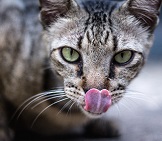It is the remaining questions that make it the hardest to heal.
His last act on Earth was to apologize, over and over and over again. But I had to do what everything in my heart rebelled against. It was not an act of revenge that I had to commit, but a final act of love.
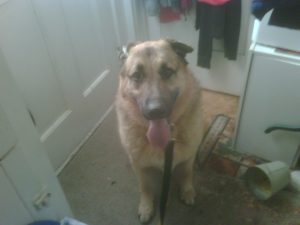 Kunta
Kunta
It happened in 2010, about this time of year. Sounds like a long time ago, it doesn’t feel like it.
It was almost two years before I was able to share parts of this story without sobbing helplessly. I still cried, but not in the same torrents of the past.
With time comes acceptance of what cannot be changed, though the mourning never truly ends. A part of life is the loss that is woven into the fabric of each of our beings.
We had no idea that earlier in the evening, when Bonnie, a very saucy basset/beagle mix, was barking and we told her to quiet down, that it would be the last we would ever hear from her.
We could not have known that later that night Kunta, our beloved gentle giant of a German shepherd, would suddenly turn and kill her. We will never know for sure what happened, who started what, why our little dachshund’s ear was punctured or why our fox terrier/dachshund was hysterical and couldn’t stop shaking.
What we do know is that evening, when things were quiet and no barking was heard, Kunta bit Bonnie in the abdomen and caused injuries so severe that she died during a desperate drive through the dark to the emergency animal hospital, a drive that ended on the side of the highway as we came to realize the fight for her life was over.
It was a situation no one could make better, no amount of consoling would bring back the moments before, when there was still time to stop the attack. There was no doubt that it was a very powerful jaw and large teeth that had killed Bonnie. Only one dog in the outside run had a jaw big enough to cause such injuries.
With horrible certainty, I knew what must be done, as I had learned on the farm so many years ago.
I could finally understand why it is so important for parents to teach over and over again the lessons a child must learn.
In moments of crisis, when a brain cannot function because of great fear or sorrow, it is the words of those from our past we hear, the lessons we learned that became unknowingly ingrained within us that guide us through the dark hours.
On the farm there was one steadfast rule when it came to animals: If any animal kills another, it must be put to sleep. Once that line is crossed and blood has been tasted, no one is safe. It was the certainty of this lesson that carried me through what was to come next. I did not debate the issue, I did not second guess it. It was a lesson ingrained, a truth that must be acknowledged and followed no matter how much the heartbreak and unfairness.
I knew with dreaded certainty that I could no longer trust Kunta. As much as I loved him, as much as I was destroyed by what I had to do, I, whom he trusted with all of his heart, had to give an order to take his life, much as I once gave his life a chance years before.
Kunta was doomed since his birth in a horrible puppy mill. I didn’t know his background when I bought him. All I knew was that he was a big galoot of a pup who was in mourning because his sister had just been sold. It was obvious he needed love.
When we brought him home and introduced him to Pepper, the dachshund, it was instant hero worship. Kunta became convinced he was a dachshund, and Pepper believed she was a German shepherd. It was a very entertaining relationship.
The two would play chase at top speed through the house. Pepper was tiny enough that she could, at full-tilt run, go under the sofa. Kunta, forgetting his own size, would, at full-tilt run, try to follow her. The sofa would actually lift off the floor from the force of his dive. Not an experience you forgot if you happened to be sitting on the sofa at the time!
Pepper learned how to grab squeaky toys right out of Kunta’s mouth and hide them under the sofa, far out of Kunta’s reach, but that didn’t mean he didn’t try to get them, once again causing the sofa to move and tilt.
As time went on, I learned he had several issues. I worked endlessly and gently to crate train him, to get him to follow commands. His brain seemed limited on what it was capable of learning, so we went as far as we could, always hoping that one day he’d somehow gain comprehension and be able to follow a “heel” command for more than thirty seconds. It was much like working with a developmentally disabled child. His eyes showed how much he wanted to be a good dog, but it was like something within him kept from learning and forced him to act out.
Kunta was so confused and erratic when we got him, it was like he’d been given too much caffeine or had severe attention deficit disorder. He made so many mistakes and kept repeating them, at times I just sat on the floor with my arm around his neck and talked to him, trying to figure out how to reach him.
He caused so much damage that the first thing he learned to do was to say “sorry” by putting his head down and resting his forehead on my ankles as he bowed in apology. A trick that went a long way to forgiving him for his transgressions.
But now there was not a sorry big enough to bring Bonnie back to life. There was not a way to make Kunta understand that killing was wrong. He was now blooded and unpredictable and lost forever.
To this day, I know that Kunta never would have killed on purpose. I know that somehow, somewhere in the fog of his brain, there was a break that happened that night. A fissure in his ability to reason and he killed without understanding that he was killing.
He sat in his crate later that night and looked at me, confused as to why I was crying hysterically. I knew he was still my big, gentle giant of a dog, but I also know that there was a part of his mind that had become a killer and there was no separating of the two. The thought that it could have been the two smaller dogs or a child instead of Bonnie was very sobering.
The next morning I had to tell the children. They had slept through the trauma and knew nothing. I debated all night long how to handle it and finally decided to do as I would have wanted my parents to when I was a kid. I didn’t want them to carry the burden to school, but I knew they would never forgive me for denying them the right to say a supervised good-bye to Kunta.
Their morning started by learning that Bonnie, whom they had so quickly folded into their hearts, whom they snuggled up and watched TV with, whom they had come to rely on being there for many more tomorrows, had died as they slept.
In the moment they learned that Bonnie had died, I knew they thought that was the total of the sorrow they would have to bear. As they clung to me for comfort, I had to tell them that Kunta, the big oaf whom we trusted with our lives, had killed and he must, in turn, be put to sleep.
Through their howls of sorrow, I explained why it must be done and I promised it would be done as gently as possible and I would not leave Kunta’s side. With that small grain of comfort, they petted Kunta and hugged him and cried into his fur. They tried to ignore the leash I kept a tight grip on.
Then I sent them off to school and I left with my beloved Kunta for the vet. I had called the vet the night before and left a message letting her know we would be there first thing in the morning and what had happened. It was all I could do that morning to keep from throwing up.
Perhaps this is a lesson, not just in having strong lessons from childhood to lean on but also in what makes puppy mills so wrong. I did not know he was from a puppy mill until years after I bought him. I could only guess what he had seen as a puppy from the way he reacted to various noises and events. I also learned that the pet store I had gotten him from had abused him further. I never dreamed that my happy galoot would one day crack.
It was after that horrible night that my fiancé admitted that, despite what he had said previously, he didn’t know anything about dogs. Because he had claimed he knew so much about dog handling and because Bonnie was his dog, I had followed his dictate on how to get the dogs to get along and bond. Eventually I came to learn it wasn’t the only lie he had told me, ending the relationship that never really was.
There always will be the forever questions, the “what ifs” that will haunt. What if Bonnie had been fixed as the other dogs had been and she had never come into heat, would she still be alive? What if I had brought the dogs in earlier? Why was it so quiet that night in the dog pen when there was so much violence? If I had gone out later to bring the dogs in, would Kunta have torn apart Bonnie even more as she lay dying? What if I had followed what I had been taught about dogs, instead of what my fiancé insisted he knew?
It has taken time and piecing together the few scarce facts that exist, but I have come to a theory as to what happened that night.
Bonnie, when she came into heat, confused the other dogs with her actions. They did not understand what she was doing or why and it caused tension. If I had understood the level of tension, I would have taken steps to intervene before tragedy struck.
I believe that night, for whatever the reason, Bonnie attacked Pepper (the dachshund) and bit her in the ear. The size of the puncture in Pepper’s ear matched the size of Bonnie’s teeth. When Pepper was attacked, Kunta jumped to defend Pepper. To Kunta, Pepper was his sister and it was his job to protect her. He attacked Bonnie and bit her in the abdomen.
I have learned since then that a German shepherd’s teeth make deep, penetrating wounds that don’t cause much outside damage but a tremendous amount of internal damage. The extensive internal damage explains why Bonnie, though she courageously tried, could not stand nor walk and why there was little external bleeding.
While Kunta was only trying to defend Pepper, that act set the stage for future danger. What if next, Kunta misunderstood something we were doing with Pepper (cutting her nails, for instance; something she hated and would whine at us for), he would have attacked us to defend her because he already had crossed that line.
A few days prior to the Kunta-Bonnie tragedy, my fortune cookie had the message that there would be changes. With an upcoming wedding, changes are inevitable. Some gain and some loss. But this was a senseless loss, an unwelcome change.
While we waited in the vet’s office that morning, Kunta put his head down and apologized. Not once, but over and over and over again. No matter how many times I told him that he was forgiven and we knew he didn’t mean to kill Bonnie, no matter how many times I begged him to stop, and no matter how my tears flowed, Kunta kept apologizing.
When we were called into the exam room, the vet asked me for the full story. When I had finished sharing the events of the night before, she nodded her head and said she agreed we had no choice. She petted Kunta and let him know he was loved.
As the vet readied the first needle, Kunta continued to apologize and I could no longer hold back as the ocean of grief ripped open within me and I cried helplessly, Kunta’s fur absorbing the tears.
The first needle went in and I held as much of him as I could in my arms. The vet patiently waited as the shot took affect and relaxed him and made it so the final shot wouldn’t hurt him.
Kunta whined and I apologized to him for the life he had been shorted. For all of the what ifs.
I told him that I loved him and that this had never been the life his noble soul had deserved, as he sank to the floor. The second shot was delivered and within a minute he was gone. The vet checked for a heartbeat another minute later and it was over.
The vet stood and looked at me, quietly said she would be back, and left me there. I found that I couldn’t leave him on that cold floor. Now it was me who could not stop apologizing to him. Telling him how much I loved him and how I hoped he was now running in big open fields of green.
It took a lot for them to get me away from him, to make me leave his side. There wasn’t a dry eye in that office that day. Everyone had loved that big dopey dog.
For weeks afterward, Pogo (fox terrier/dachshund mix) would grab the toy Kunta and he used to play tug of war with and he would bound around the pen, looking for his buddy. After a few minutes, he would slow to a puzzled walk and wander around the pen, the other end of the toy dangling and ungrabbed. He would look at me, confused, eventually dropping the toy and lying down. His eyes said it all.
A couple of weeks later, I received a call that Kunta’s ashes were ready to be picked up. They had made a paw print of one of his giant front feet, saved a clipping of his hair. His well-worn collar, smelling doggy, was in the bag. It was a long time before I could look in the bag and hold the paw print mold.
It was about a year later that I formed a business with a friend. The business flourished, the partnership failed. I think part of the reason was because she eventually admitted to me that she had worked at the pet store Kunta was sold from, and that she had been one of his abusers.
Kunta’s remains are with me in a quiet little corner of my business office. I like to think that his pain is gone and his big heart, full of so much love, is now stronger than the confusion that was in his brain and his spirit is getting to be the dog he always wanted to be.
Footnote: About two years after that night, Pepper died in her sleep. Kunta’s ashes were put with her so they could be together. I like to think they are playing together, no pain, no sorrow. Pogo is still living, but his mind is broken. When Pepper died, it seemed to be the final straw, he is no longer anything at all like his old self and can no longer be calm. He has a new “brother” named Pivot, which has helped, but he never touches the old tug toys and he can’t be alone. More what ifs.
Copyright 2017 A. Barnes | All Rights Reserved.
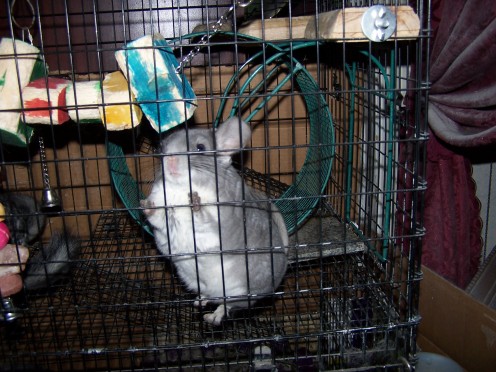
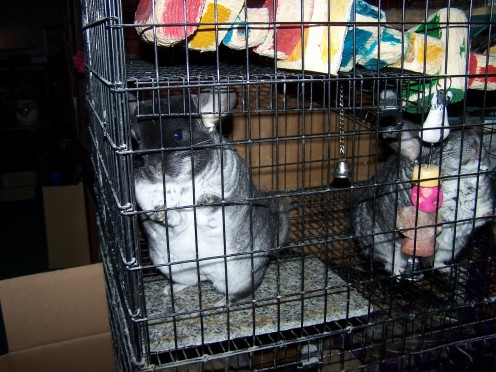
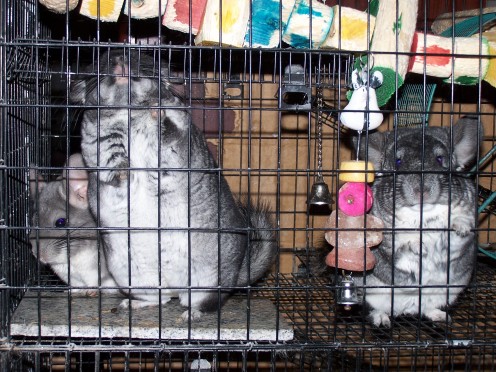
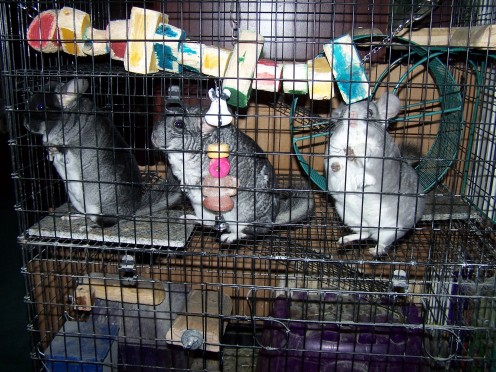
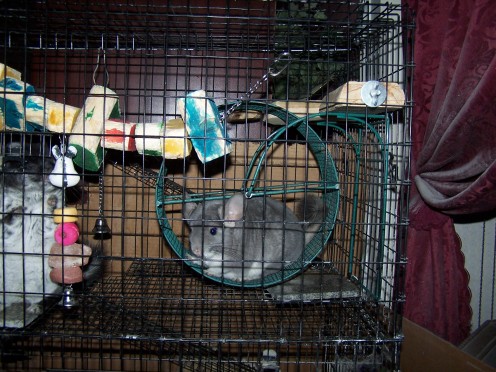
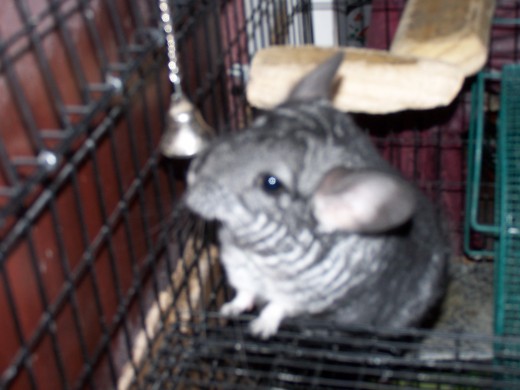
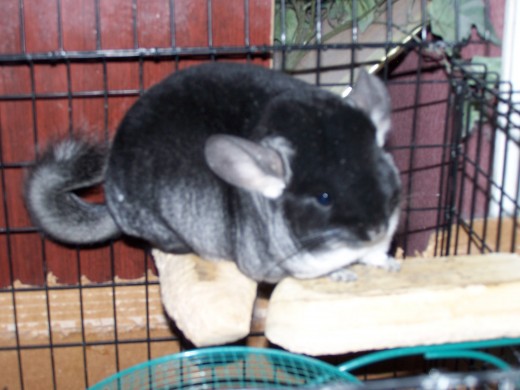
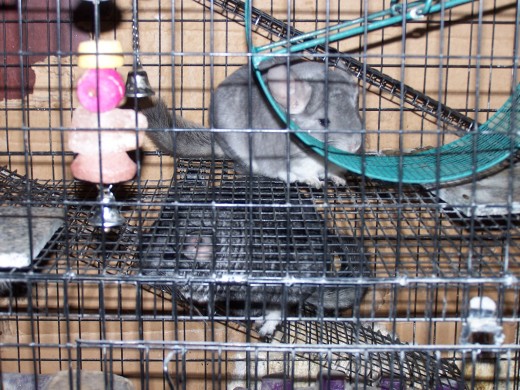

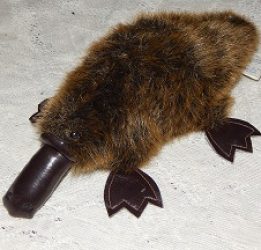
 Kunta
Kunta